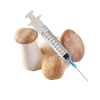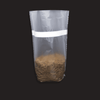Shop Mushroom Cultivation
Shop By Species
Shop By Kit Type
Shop By Species
Shop By Spawn Type
Purchase in Bulk
Shop By Type
Shop By Category
Shop By Bag Type






































